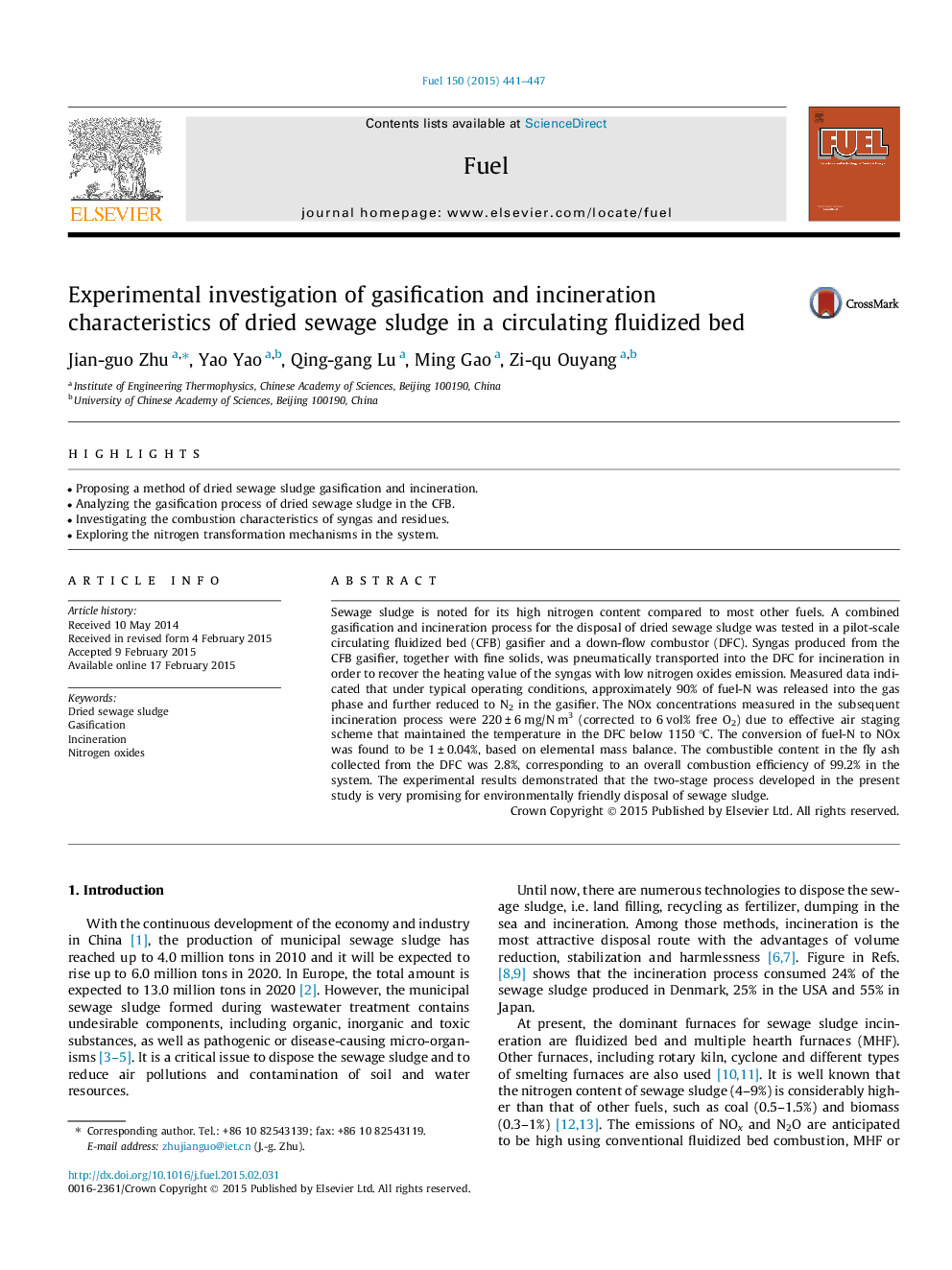| Article ID | Journal | Published Year | Pages | File Type |
|---|---|---|---|---|
| 205729 | Fuel | 2015 | 7 Pages |
•Proposing a method of dried sewage sludge gasification and incineration.•Analyzing the gasification process of dried sewage sludge in the CFB.•Investigating the combustion characteristics of syngas and residues.•Exploring the nitrogen transformation mechanisms in the system.
Sewage sludge is noted for its high nitrogen content compared to most other fuels. A combined gasification and incineration process for the disposal of dried sewage sludge was tested in a pilot-scale circulating fluidized bed (CFB) gasifier and a down-flow combustor (DFC). Syngas produced from the CFB gasifier, together with fine solids, was pneumatically transported into the DFC for incineration in order to recover the heating value of the syngas with low nitrogen oxides emission. Measured data indicated that under typical operating conditions, approximately 90% of fuel-N was released into the gas phase and further reduced to N2 in the gasifier. The NOx concentrations measured in the subsequent incineration process were 220 ± 6 mg/N m3 (corrected to 6 vol% free O2) due to effective air staging scheme that maintained the temperature in the DFC below 1150 °C. The conversion of fuel-N to NOx was found to be 1 ± 0.04%, based on elemental mass balance. The combustible content in the fly ash collected from the DFC was 2.8%, corresponding to an overall combustion efficiency of 99.2% in the system. The experimental results demonstrated that the two-stage process developed in the present study is very promising for environmentally friendly disposal of sewage sludge.
